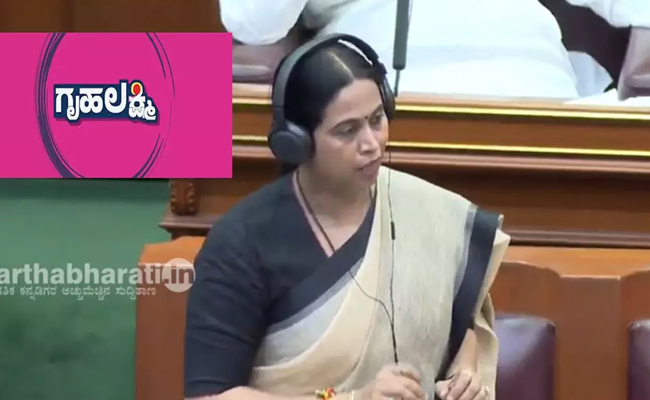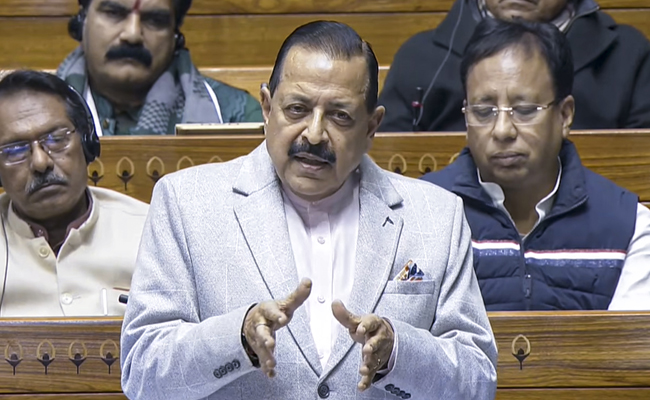Bengaluru (PTI): To address the increasing traffic challenges, the Bengaluru Traffic Police (BTP) on Wednesday announced the implementation of the Bengaluru Adaptive Traffic Control System (BATCS), a cutting-edge technology designed to streamline traffic flow and reduce delays city-wide.
BATCS aims to revolutionise traffic management in the city through real-time Artificial Intelligence-powered traffic signal control systems, officials said.
The BATCS project, initiated in May 2024, includes the upgradation of 136 existing junctions and the installation of 29 new ones, covering a total of 165 traffic signals.
This 'ambitious project' utilises Centre for Development of Advanced Computing's (C-DAC) indigenously developed CoSiCoSt ATCS application, which is tailored specifically to manage India's heterogeneous and often unpredictable traffic conditions.
The project is being implemented with Arcadis IBI Group serving as the system integrator and Infra Support as the project management consultants.
"Upon completion of these 165 junctions by January 2025, Bengaluru Traffic Police shall expand the system for balance 400 junctions in a phased manner. Upon completion, the city will have a comprehensive, city-wide Al Powered intelligent traffic signal control system that significantly reduces delays, improves journey times, and provides a safer road environment for all users," Bengaluru Police Commissioner B Dayananda told reporters here.
The successful city-wide implementation of BATCS will ensure seamless travel across the city and help Bengaluru become a model for smart traffic management in urban India, he said.
According to Joint Commissioner of Police for Bengaluru City Traffic, M N Anucheth, BATCS stands out from the previous traffic management systems used in the city due to its unique capabilities and use of Al technology.
Unlike the older system, which lacked real-time adaptability and central monitoring, BATCS dynamically adjusts signal timings based on real-time traffic densities using inputs from camera sensors at all junction approaches. This ensures optimal traffic flow and minimises delays. resulting in smoother travel experiences for commuters, he said.
"BATCS provides centralised monitoring of traffic signals from a central control room, enabling quicker responses to changing traffic conditions and easier adjustments to signal timings. Signals along major corridors are synchronised to create green waves' that allow vehicles to move smoothly with fewer stops, reducing travel time and improving fuel efficiency," Anucheth said.
"The system also incorporates a feature for emergency vehicle priority and can be adapted for pedestrian and public transport needs in the future. In scenarios of accidents or incidents, predefined plans are analysed at critical junctions using simulation models, and the system can quickly switch over to respond efficiently," he added.
He noted that the BATCS system is different from the recently launched 'Moderato' system, which is based on an origin-destination method of signal control that requires extensive data on traffic patterns.
"In contrast, BATCS relies on real-time traffic volume data and a simpler, more effective control algorithm designed to handle such complexities. This approach enables BATCS to deliver better results under Indian traffic conditions with lesser data requirements and more dependable key performance indicators," Anucheth stated.
As of today, 60 junctions have been successfully upgraded in key areas such as Basavanagudi, Jayanagar. JP Nagar, and Hudson Circle, with ongoing work to ensure the timely completion of the remaining junctions by January, 2025. Once fully operational, further optimisation and fine-tuning will be carried out to ensure smoother and more efficient traffic management across the city, he said.
"Preliminary results have shown significant reductions in travel times along major corridors such as KR Road, where manual traffic management has been replaced with vehicle-actuated and adaptive signal control. This change has not only reduced congestion but has also decreased overall travel times for commuters," Anucheth added.
The BTP said they are closely coordinating with the Bruhat Bengaluru Mahanagara Palike (BBMP) for smoother execution of the project. The BATCS project will complement existing and upcoming infrastructure developments such as tunnels, flyovers, and road widening initiatives. While tunnels and flyovers help separate through-traffic, adaptive signaling optimises surface-level traffic flow, ensuring an efficient and sustainable transport network for the city.
"We urge public cooperation during the installation, testing, and trial operations of BATCS. While minor inconveniences may arise, these are necessary steps to ensure the success of this transformative system. BTP will be conducting public awareness campaigns and sharing information through various media channels to keep citizens informed about any disruptions during the system rollout," Anucheth added.
Let the Truth be known. If you read VB and like VB, please be a VB Supporter and Help us deliver the Truth to one and all.
Belagavi (Karnataka) (PTI): The opposition BJP on Wednesday staged a walkout from the Karnataka assembly protesting the alleged "non-disbursal" of two months' installments to 1.26 crore beneficiaries under a woman's assistance scheme of the state government.
The protest followed a heated debate in which the opposition accused the state government of providing "misleading" information regarding the payment status of the flagship Gruha Lakshmi scheme.
The saffron party members trooped into the well of the House and raised slogans, leading to the adjournment of the proceedings of the House for over an hour.
ALSO READ: 'Homebound' makes it to Oscar shortlist for best international feature
The Gruha Lakshmi guarantee scheme is one of the five pre-poll promises of the ruling Congress. It provides Rs 2,000 monthly to women heads of the Below Poverty Line (BPL) families.
The BJP legislators accused Woman and Child Welfare Minister Laxmi Hebbalkar of having "misled" the House by giving false information to BJP MLA Mahesh Tenginkai that all the instalments till August have been paid under the scheme.
The opposition charged that the installments for the months of February and March this year were not paid.
The BJP MLAs' grouse was that they had been demanding an explanation from the Minister for the past three days, but she never turned up to provide information.
As soon as the session started, the opposition members trooped into the well of the House demanding the Minister's presence, which led to the adjournment.
When the members assembled again, the Minister replied that this is a unique flagship programme of the Congress government, which is a model for all the states.
Hebbalkar said she always strived to ensure that this scheme is implemented religiously.
"However, when I checked, I noticed that two months' installments were not paid to the beneficiaries through Direct Benefit Transfer (DBT). If my reply has hurt anyone, then I express my regret," she said.
Deputy Chief Minister D K Shivakumar, who came to the defence of Hebbalkar, said the BJP should apologise for the lie in the Union Budget.
"Despite the Union Minister Nirmala Sitharaman announcing Rs 5,300 crore for the Upper Bhadra Irrigation Project in the budget, the money was not given to Karnataka. You should question that as well," Shivakumar underlined.
ALSO READ: Actress Shilpa Shetty's restaurant booked for breaching operating hours
To this, Leader of Opposition in the assembly R Ashoka said the matter was raised because not only were the BJP members hurt but also the 1.26 crore beneficiaries who were eagerly waiting for the money.
Demanding that the lie be expunged from the House records, he insisted on a date for when the backlog will be paid to the beneficiaries.
The Minister said she was apologising for giving a wrong reply, but she was peeved at the way a woman was targeted in the House.
Objecting to this statement, BJP MLA S Suresh Kumar asked her to refrain from playing victim card and bring up the issue of gender, caste and religious discrimination as it was a matter related to 1.26 crore people.
Ashoka and the BJP MLAs then staged a walkout, saying the Minister's reply was not satisfactory.





